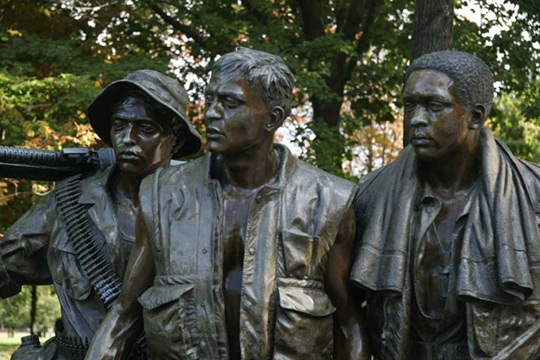
On Wednesday, October 27, we once again embraced the subject of Veterans Benefits, working in partnership with VITAS Healthcare to present an informative seminar covering the myriad benefits available to the Veteran Community. VITAS Veterans Liaison Benedetto “Ben” Mongiovi addressed key subject areas, including eligibility criteria; VA medical priority groups; disability compensation, pension, and survivor compensation; VA burial benefits; contacting VA medical facilities; and much more.
A Recording of the October 27 Seminar is available on the Foundation website…click here.
The session began with a brief overview of AMAC and the AMAC Foundation, focusing on the organization’s support of the Veteran Community. The introduction covered AMAC’s work on its “Veterans 2021 Project,” including a quick walk-through of the AMAC Foundation’s clearinghouse of programs, information sources, and resources available to fill specific needs and interests of the Veteran community. The clearinghouse is housed and maintained in databases carried on the Foundation’s primary website, and is available on-demand for search by interested parties. (For a more complete overview of AMAC’s “Veterans 2021 Project,” check out this post from late last year.)
In introducing Ben Mongiovi, AMAC Foundation Executive Director Gerry Hafer noted that having served in a number of military situations, including service in Iraq, Kuwait, and Turkey certainly qualifies him as an expert resource on Veterans Benefits, as does his current service as VITAS Healthcare’s Veterans Liaison for the tri-county area. Hafer also noted that Ben is widely recognized as a successful businessman, entertainer, college faculty member, and substance abuse counselor, with a doctorate from Liberty University.
In his remarks, Ben Mongiovi explained the structure of the Department of Veterans Affairs, covering the roles and responsibilities of the VHA, VBA, and NCA and how they interact to serve the Veteran Community. He also explored the role of the Veteran Service Officer, and explained in detail the term “service connection” and how it applies to various types of benefits, the “defined war periods and how they govern specific benefit programs, and defined the various categories under which Veterans are discharged from service. Ben’s material covered the forms and documents Veterans will need when they approach the Veterans Administration facilities for medical attention.
A key portion of Ben’s presentation focused on the eight “priority groups” used by the Veterans Administration to allocate Veterans into “buckets” governing which benefits are available to which Veteran Group, describing how degrees of disability, income levels, and exposure to specified situations (e.g., radiation exposures, Vietnam duty tours, etc.) affect eligibility to specific benefit programs. He also covered the co-pay requrirements applicable to several priority groupings, as well as the hispital inpatient coverages where applicable.
Ben also covered the process of coordinating care with VA Medical Centers, including the fundamental importance of being correctly enolled for VA medical care, and covered in depth the various types of long-term skilled services available to Veterans. In this latter segment, he covered VA-owned and operated Community Living Centers (CLC) and its community nursing home program, along with Veterans’ Homes owned and operated by the states. In this portion, he also covered home health aid and in-home respite services available through the VA, as well as the disability compensation available to Veterans with VA-recognized service connection disabilities.
On the often misunderstood issue of “pension” available to Veterans, Ben provided a detailed discussion of the Veterans Aid and Attendance benefit program and a definition of how it works and who it applies to. Explaining that this program is often referred to as a pension program, he stressed that it is not to be confused with military retirement programs. As part of this discussion, he also covered the income and asset limitations on Aid and Attendance eligibility, as well as the financial benefits available via this program.
Ben concluded his presentation with a discussion of burial and memprial benefits available to Veterans, from VA National Cemetary interment to burial in private cemetaries, and the coverages and expense reimbursements offered to eligible Veterans.
In addition to providing a variety of handouts on VA benefits, Ben presented details on a host of reference sources and information websites and organizations available for contact in the event of questions.
Subscribe
Sign Up for Our E-Newsletter!
Stay up-to-date on all of the topics you care about by subscribing to our quarterly newsletter emailed directly to your inbox!
SubscribeSubscribe
Sign Up for Our E-Newsletter!
Stay up-to-date on all of the topics you care about by subscribing to our quarterly newsletter emailed directly to your inbox!
Subscribe